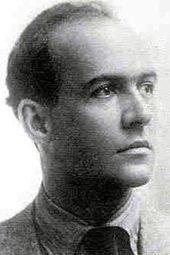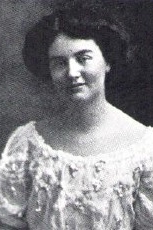When we established Thyrsus Press and decided to become publishers as well as printers, we had three goals in mind: 1) to publish the work of contemporary writers that we admire, 2) to revive the work of neglected historic writers (particularly those with bohemian or, at least, anti-social tendencies), and 3) to never take ourselves too seriously.
We were also seeking to push ourselves out of our zone of comfortable complacency and to utilize all of the tools and techniques at our disposal - including both relief and intaglio printing, traditional metal type, collographs, monoprinting, and more. And with these principles as our guide, we have been driven to embrace our forebears and inaugurate a new series of broadsides based on the work of one of modern poetry's least heralded movements: the Spectric Poets. We've kicked off this series with a small, but unruly little handbill depicting the poem, Opus 6, by the distinguished poet and father of the Spectric movement, Mr. Emanuel Morgan (broadside depicted below).
"Opus 6": No. 1 in the Spectric Poetry Series
The illustration is a photo-etching based on a image that Jinny captured at San Francisco's Musée Mécanique - one of the world's largest collection of early 20th century penny arcade games and instruments. The type is a grab bag of incomplete - and sometimes damaged - fonts that we have rescued from destruction over the last year or two. We ran it once through our etching press and thrice through the platen press.
But now a bit of background on the poem itself. The Spectra poets, whose eponymously named debut was privately published in 1916, were a collection of experimentalists dedicated to the proposition that "the theme of a poem is to be regarded as a prism, upon which the colorless white light of infinite existence falls and is broken up into glowing, beautiful, and intelligible hues." Or, in the words of the movement's co-founder, the deliciously named Anne Knish:
“Just as the colors of the rainbow recombine into a white light - just as the reflex of the eye’s picture vividly haunts sleep - just as the ghosts which surround reality are the vital part of that existence, so may the Spectric vision, if successful, synthesize, prolong, and, at the same time, multiply the emotional images of the reader.”
The book that started it all: SPECTRA! (Source: Wikipedia)
The Spectrics were quickly embraced in the welcoming bosom of the burgeoning American avant-garde. No lesser a luminary than Edgar Lee Masters, the Pulitzer Prize winning author of the Spoon River Anthology, endorsed the movement. In his letter to Emanuel Morgan, Masters proclaimed that “You have an idea in the sense that places do have an essence, everything has a noumena back of its appearance and it is this that poetry should discover."
Even the non-literati took note of the movement. Thomas Raymond, the conservative Republican nominee for mayor of Newark, New Jersey, was quoted as saying that he had “decided to avoid political issues and to limit his campaigning to readings of Spectra and Walter Pater”.
As Spectra fever swept the country, Morgan and Knish were joined by another supplicant at the altar of prismatic poetry, Elijah Hay. Together the three found great success, with their work appearing in many of the the leading avant-garde journals of the day, including Others, Poetry, and The Little Review. William Carlos Williams, one of the leading experimentalists of the era, corresponded with Hay, stating that he preferred his and Morgan's work to that of Ms Knish because (like most women) "A.K.’s things suffer from too much theory".
Inevitably, the movement spawned a backlash. It's critics included a group of students at the University of Wisconsin at Madison who in 1917 created a parody of Spectra called "Ultra-violet poetry" and published a series of pastiches under names such as “Manual Organ” and “Nanne Pish".
Despite the excitement that surrounded their poetry , the Spectra movement proved to be short lived. By 1918, its leading lights had ceased publishing and the movement faded back into the obscurity from which it had emerged.
All of this is both completely true and utter bullshit.
The Spectra poets were, in fact, a poetically inclined Harvard aesthete (and friend of the mystic Khalil Gibran) named Witter Bynner [Emanuel Morgan] and his friend and fellow Harvard grad, Arthur Davison Ficke [Anne Knish]. They were later joined by Marjorie Allen Seiffert, a wealthy woman from Moline, Illinois who wrote under the name Elijah Hay.
Their aim was to mock the pretensions of such pre-WWI modernist movements as the Imagists and Vorticists, as well as their continental compatriots, the Futurists and Dada poets. However, once the hoax was finally revealed and the poets began to publish and promote their "own" poetry in honest sincerity, most critics were not shy in advancing the belief that their parodic verses were superior to their official efforts. Bynner himself could not entirely disagree, remarking: “Once in a while we think so ourselves.”
By 1918, the Spectra hoax had run its course and Bynner moved to Berkeley where he was hired as Professor of Oral English for the Student's Army Training Corp., a kind of precursor to the ROTC. When this military training program was discontinued in 1919, he was asked by the English Department to stay for another year and teach a class in poetry writing. He taught most of his classes outdoors, on the side of a hill below the Greek Theater, and often invited favorite students to his room at the Carleton Hotel on Telegraph where he hosted a kind of literary salon. He was beloved by his students who published an extremely earnest collection of verse in his honor titled, WB in California. The book contained such unforgettable gems as this:
“Those happy hours in Bynner’s room
For you and you and me
Will ever strum a tender note
In days that are to be.”
Witter Bynner in Japan, 1917 (Source: Jacket Magazine)
Other local scribes were far less reverent, however. Bynner's notoriety attracted the attention of Harry Noyes Pratt, a local poet of some renown who would later go on to become editor of The Overland Monthly and art critic of the San Francisco Chronicle. Noyes considered himself a kind of guardian of the regions native son's and daughters apparently took umbrage at this young arriviste who wrote in free verse and had the audacity to criticize California poetry. Bynner dismissed the work of Ina Coolbrith, the doyen of the nascent Bay Area poetry scene and the first California Poet Laurete, as "commonplace but gentle".
Noyes called Bynner a "near poet" and publicly rebuked him (and other modern poets) for sweeping away "the normal stadards of beauty in nature" and replacing them with "grotesque fantasies". So, in just a few short years, Bynner had gone from mocking the moderns to being mocked as one himself.
In the end, it seem appropriate that Noyes (and perhaps Bynner himself) is now best remembered for this bit of doggerel:
“Fame chewed his pencil, scratched his head,
Fame—worried-frowned, and puzzled said:
I’ve known ‘em all, both saints and sinner;
but—who the hell is Witter Bynner?”
Sources:
Berkeley Bohemia: Artist and Visionaries of the Early 20th Century, by Ed Herny, Katie Wadell, Shelley Rideout, published by Gibbs Smith, March 19th 2008
"Marjorie Allen Seiffert and the Spectra Hoax", Jacket Magazine, No. 17, June 2002
Article on Spectra, http://sniggle.net/spectra.php
"The Spectra Hoax", Davenport Library Blog, December 8, 2010
Spectra (book), Wikipedia article
Spectra - Complete Text on ecclesiastes911.net



